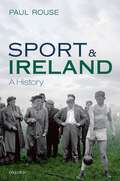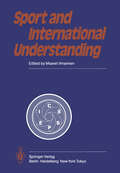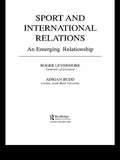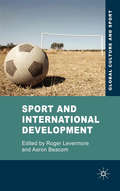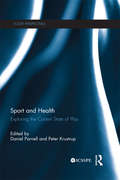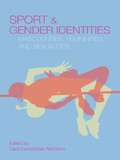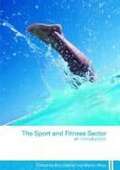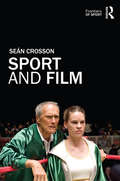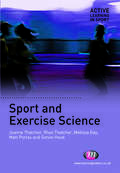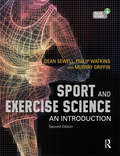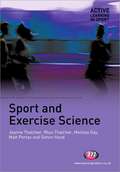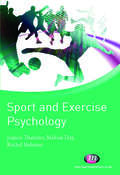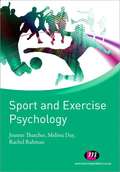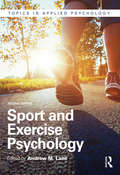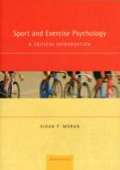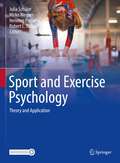- Table View
- List View
Sport and Ireland: A History
by Paul RouseThis is the first history of sport in Ireland, locating the history of sport within Irish political, social, and cultural history, and within the global history of sport. Sport and Ireland demonstrates that there are aspects of Ireland's sporting history that are uniquely Irish and are defined by the peculiarities of life on a small island on the edge of Europe. What is equally apparent, though, is that the Irish sporting world is unique only in part; much of the history of Irish sport is a shared history with that of other societies. Drawing on an unparalleled range of sources - government archives, sporting institutions, private collections, and more than sixty local, national, and international newspapers - this volume offers a unique insight into the history of the British Empire in Ireland and examines the impact that political partition has had on the organization of sport there. Paul Rouse assesses the relationship between sport and national identity, how sport influences policy-making in modern states, and the ways in which sport has been colonized by the media and has colonized it in turn. Each chapter of Sport and Ireland contains new research on the place of sport in Irish life: the playing of hurling matches in London in the eighteenth century, the growth of cricket to become the most important sport in early Victorian Ireland, and the enlistment of thousands of members of the Gaelic Athletic Association as soldiers in the British Army during the Great War. Rouse draws out the significance of animals to the Irish sporting tradition, from the role of horse and dogs in racing and hunting, to the cocks, bulls, and bears that were involved in fighting and baiting.
Sport and International Understanding: Proceedings of the Congress Held in Helsinki, Finland, July 7–10, 1982
by Maaret IlmarinenIn recent years concern has been growing ab out the preservation ofworld peace, while over the past few decades there has been a vast increase in the amount of international sporting activity and hence more opportunities to advance international understanding and peace. It is this situation which caused the Congress on Sport and International Understanding to be convened, the idea for it ftrst having arisen after the Helsinki Conference on Security and Co-operation in Europe in 1975. The venue for the Congress was, as for the Conference on Security and Co-operation, Finlandia Hall. It was held under the auspices ofthe International Council ofSport and Physica1 Educa tion (ICSPE) and was organised by the Finnish member organisations, the Finnish Society for Research in Sport and Physica1 Education (organising association), Finnish Central Sport Federation (SVUL) and the Workers' Sport Federation (TUL). The aim ofthe Congress was to analyse the role of sport in advancing international understanding and to promote research in this fteld. In addition, the Congress wished to offer researchers and those involved in sporting activities an opportunity to exchange ideas about the themes under discussion. The aim of the Congress was to fmd the answers to the following questions: 1. What forms does international co-operation take in present-day competitive and top-level sport, sports for all and other forms of physica1 culture? What is its histo rica1 background and future? 2.
Sport and International Relations: An Emerging Relationship (Sport in the Global Society)
by Adrian Budd Roger LevermoreSport plays a highly significant role in the lives of millions the world over, and yet the impact of this global phenomenon on the subject of international relations hes been neglected. The contributors to this collection argue that sport remains both an underestimated and understudied aspect of international relations, and that the growth of its importance should be seen in the complex interdependencies and global systems of governance.The text examines:* how the expansion of professional sport, and the revenues generated by mass media's links with sport have transformed the international political economy;* how sport contributes to nation building and notions of identity;* how sport is a significant facet of international diplomacy.International sport is far from being peripheral to international relations. This challenging and comprehensive introduction will be of interest to students and all those working in international relations and sport studies.
Sport and International Relations: An Emerging Relationship (Sport in the Global Society)
by Roger Levermore Adrian BuddSport plays a highly significant role in the lives of millions the world over, and yet the impact of this global phenomenon on the subject of international relations hes been neglected. The contributors to this collection argue that sport remains both an underestimated and understudied aspect of international relations, and that the growth of its importance should be seen in the complex interdependencies and global systems of governance.The text examines:* how the expansion of professional sport, and the revenues generated by mass media's links with sport have transformed the international political economy;* how sport contributes to nation building and notions of identity;* how sport is a significant facet of international diplomacy.International sport is far from being peripheral to international relations. This challenging and comprehensive introduction will be of interest to students and all those working in international relations and sport studies.
Sport and International Development (Global Culture and Sport Series)
by Roger Levermore Aaron BeacomInvestigating the capacity of sport to act both as a conduit for traditional development assistance activities and as an agent for change in its own right, this book argues that sport can contribute to the development process, particularly where traditional development approaches have difficulty in engaging with communities.
Sport and Health: Exploring the Current State of Play (ICSSPE Perspectives)
by Daniel Parnell and Peter KrustrupIt is a common assumption that sport is good for us and that participation in sport embodies public health benefits. With sport being increasingly used to deliver public health interventions worldwide, this book critically examines the rationale and evidence for sport as a public health policy tool. Featuring contributions from the United Kingdom, United States, Europe and Australia, it sheds new light on an emerging field of research which has significant implications for public health across the globe. Each chapter looks at the effectiveness of sport interventions across the lifespan for biological, psychological and social benefits, including those that utilise a settings-based approach to health promotion such as schools and professional sport clubs. Drawing on cutting-edge research which examines policy and practice at community and elite levels, this book addresses key topics such as education, engaging children and young adults, mental health, sport sponsorship and volunteering. Sport and Health: Exploring the Current State of Play is important reading for all students, scholars and policy makers with an interest in the sociology of sport, physical activity and public health.
Sport and Health: Exploring the Current State of Play (ICSSPE Perspectives)
by Daniel Parnell Peter KrustrupIt is a common assumption that sport is good for us and that participation in sport embodies public health benefits. With sport being increasingly used to deliver public health interventions worldwide, this book critically examines the rationale and evidence for sport as a public health policy tool. Featuring contributions from the United Kingdom, United States, Europe and Australia, it sheds new light on an emerging field of research which has significant implications for public health across the globe. Each chapter looks at the effectiveness of sport interventions across the lifespan for biological, psychological and social benefits, including those that utilise a settings-based approach to health promotion such as schools and professional sport clubs. Drawing on cutting-edge research which examines policy and practice at community and elite levels, this book addresses key topics such as education, engaging children and young adults, mental health, sport sponsorship and volunteering. Sport and Health: Exploring the Current State of Play is important reading for all students, scholars and policy makers with an interest in the sociology of sport, physical activity and public health.
Sport and Gender Identities: Masculinities, Femininities and Sexualities
by Cara Carmichael AitchisonThis important new book brings together gender studies and sexuality studies to provide original and critical insights into processes of identity formation in a wide range of sport-related contexts. The authors draw on contemporary debates concerning gender and identity from a range of disciplines including sociology, social and cultural geography, media studies and management studies, to address key issues in masculinity, femininity and sexuality: Part 1: Representing masculinities in sport analyses media representations of men’s sports, exploring the variety and complexity of concepts of masculinity. Part 2: Transgressing femininities in sport makes use of case studies to examine the experiences of women in male-dominated sporting arenas. Part 3: Performing sexualities in sport analyses the role of queer theory in sport studies, explores experiences of and responses to homophobia in sport, and examines the significance of the Gay Games. This book will be of particular interest to students and academics working in sport studies, leisure studies, gender studies, queer and sexuality studies, social and cultural geography, and sociology.
Sport and Gender Identities: Masculinities, Femininities and Sexualities
by Cara Carmichael AitchisonThis important new book brings together gender studies and sexuality studies to provide original and critical insights into processes of identity formation in a wide range of sport-related contexts. The authors draw on contemporary debates concerning gender and identity from a range of disciplines including sociology, social and cultural geography, media studies and management studies, to address key issues in masculinity, femininity and sexuality: Part 1: Representing masculinities in sport analyses media representations of men’s sports, exploring the variety and complexity of concepts of masculinity. Part 2: Transgressing femininities in sport makes use of case studies to examine the experiences of women in male-dominated sporting arenas. Part 3: Performing sexualities in sport analyses the role of queer theory in sport studies, explores experiences of and responses to homophobia in sport, and examines the significance of the Gay Games. This book will be of particular interest to students and academics working in sport studies, leisure studies, gender studies, queer and sexuality studies, social and cultural geography, and sociology.
The Sport And Fitness Sector: An Introduction
by Ben Oakley Martin RhysSport and fitness has become a key contemporary industry. Those working within the sector are now expected to demonstrate greater expertise and professional competence than ever before. The Sport and Fitness Sector: An Introduction is a vital resource for all students of sport, leisure and fitness management, offering an essential guide to professional practice and a wealth of background information on current issues within the industry. Drawing together new material and an edited selection of readings from a wide range of academic and professional sources, the book has been designed to bridge the gap between the classroom and the workplace, opening up the theory and practice of sport and fitness management for those undertaking either work-based study or conventional degree courses. Accessible and comprehensive, the book explores sport, health and fitness provision across the public, private and voluntary sectors, and examines key topics such as: sport policy trends in the sport and fitness industry management of sport and leisure services legislation and regulation crisis management health and safety customer service and retention staff training and development. The Sport and Fitness Sector: An Introduction is essential reading for all students of sport, leisure and fitness management, and for any sport and fitness professional looking to improve their vocational skills and knowledge.
Sport and Film (Frontiers of Sport)
by Seán CrossonThe sports film has become one of commercial cinema's most recognizable genres. From classic boxing films such as Raging Bull (1980) to soccer-themed box-office successes like Bend it Like Beckham (2002), the sports film stands at the interface of two of our most important cultural forms. This book examines the social, historical and ideological significance of representations of sport in film internationally, an essential guide for all students and enthusiasts of sport, film, media and culture. Sport and Film traces the history of the sports film, from the beginnings of cinema in the 1890s, its consolidation as a distinct fiction genre in the mid 1920s in Hollywood films such as Harold Lloyd’s The Freshman (1925), to its contemporary manifestation in Oscar-winning films such as Million Dollar Baby (2004) and The Fighter (2010). Drawing on an extensive range of films as source material, the book explores key issues in the study of sport, film and wider society, including race, social class, gender and the legacy of 9/11. It also offers an invaluable guide to 'reading' a film, to help students fully engage with their source material. Comprehensive, authoritative and accessible, this book is an important addition to the literature in both film and media studies, sport studies and cultural studies more generally.
Sport and Film (Frontiers of Sport)
by Seán CrossonThe sports film has become one of commercial cinema's most recognizable genres. From classic boxing films such as Raging Bull (1980) to soccer-themed box-office successes like Bend it Like Beckham (2002), the sports film stands at the interface of two of our most important cultural forms. This book examines the social, historical and ideological significance of representations of sport in film internationally, an essential guide for all students and enthusiasts of sport, film, media and culture. Sport and Film traces the history of the sports film, from the beginnings of cinema in the 1890s, its consolidation as a distinct fiction genre in the mid 1920s in Hollywood films such as Harold Lloyd’s The Freshman (1925), to its contemporary manifestation in Oscar-winning films such as Million Dollar Baby (2004) and The Fighter (2010). Drawing on an extensive range of films as source material, the book explores key issues in the study of sport, film and wider society, including race, social class, gender and the legacy of 9/11. It also offers an invaluable guide to 'reading' a film, to help students fully engage with their source material. Comprehensive, authoritative and accessible, this book is an important addition to the literature in both film and media studies, sport studies and cultural studies more generally.
Sport and Exercise Science (PDF)
by Rhys Thatcher Ms Mel Day Mr Simon Hood Mr Matthew Portas Dr Joanne ThatcherThis text introduces students to the essentials of the major contributing disciplines – biomechanics, physiology and psychology. It provides detailed knowledge and understanding of each subject area combined with explicit advice on how to study effectively, research further and think critically. Case studies clearly relate theory to practice and learning exercises support readers throughout the text.
Sport and Exercise Science: An Introduction
by Dean Sewell Philip Watkins Murray GriffinSport and Exercise Science: An Introduction provides a broad-based foundation in the major areas that underpin the scientific study of sport and exercise science, thus helping undergraduate students to develop a sound understanding of human anatomy, physiology, nutrition, metabolism, biomechanics and psychology related to sport, exercise and health. It includes a range of useful features in every chapter, including clear explanations of key concepts, colour diagrams and photographs, activities and summaries to reinforce understanding, and on-line support materials for lecturers such as question and image banks. This is the essential companion text for any student studying sport and exercise science at degree level.
Sport and Exercise Science: An Introduction
by Dean Sewell Philip Watkins Murray GriffinSport and Exercise Science: An Introduction provides a broad-based foundation in the major areas that underpin the scientific study of sport and exercise science, thus helping undergraduate students to develop a sound understanding of human anatomy, physiology, nutrition, metabolism, biomechanics and psychology related to sport, exercise and health. It includes a range of useful features in every chapter, including clear explanations of key concepts, colour diagrams and photographs, activities and summaries to reinforce understanding, and on-line support materials for lecturers such as question and image banks. This is the essential companion text for any student studying sport and exercise science at degree level.
Sport and Exercise Science
by Joanne Thatcher Rhys Thatcher Melissa Day Matthew Portas Simon HoodThis text introduces students to the essentials of the major contributing disciplines - biomechanics, physiology and psychology. It provides detailed knowledge and understanding of each subject area combined with explicit advice on how to study effectively, research further and think critically. Case studies clearly relate theory to practice and learning exercises support readers throughout the text.
Sport and Exercise Psychology (PDF)
by Dr Joanne Thatcher Mrs Rachel Rahman Ms Mel DayElectronic Inspection Copy available for instructors here This is a comprehensive and accessible text on exercise and sport psychology for students on sport science/sport and exercise science degrees. It adopts an integrated, thematic approach and covers all the required theory, concepts and research, accompanied by case studies to illustrate the applied nature of the material being covered. The book is split into two major sections, covering exercise psychology and sport psychology, and each chapter supports students as they progress from clear introductory material to more advanced discussions.
Sport and Exercise Psychology (PDF)
by Joanne Thatcher Mel Day Rachel RahmanElectronic Inspection Copy available for instructors here This is a comprehensive and accessible text on exercise and sport psychology for students on sport science/sport and exercise science degrees. It adopts an integrated, thematic approach and covers all the required theory, concepts and research, accompanied by case studies to illustrate the applied nature of the material being covered.
Sport and Exercise Psychology (Topics in Applied Psychology)
by Andrew M LaneThe new edition of Sport and Exercise Psychology asks four fundamental questions that get to the heart of this flourishing discipline: What inner states influence what people think, feel, and behave? How can people manage or self-regulate their own inner states? How can sport and exercise psychology professionals help people manage their inner states? Is sport psychology just a placebo effect? Taking an applied perspective that bridges the gap between sport and exercise, the book answers these questions by covering the key topics in the field, including confidence, anxiety, self-regulation, stress and self-esteem. There are also chapters on the role of music in performance, imagery and exercise addiction. Each chapter is written by an expert in that field, and includes a range of features illustrating specific issues, either within the research literature or their practical application. This is a comprehensive and engaging overview of an evolving discipline, and will be essential reading to any student of sport and exercise psychology. It will also be of huge interest to athletes and coaches seeking an accessible understanding of the role of psychology in sport.
Sport and Exercise Psychology (Topics in Applied Psychology)
by Andrew M LaneThe new edition of Sport and Exercise Psychology asks four fundamental questions that get to the heart of this flourishing discipline: What inner states influence what people think, feel, and behave? How can people manage or self-regulate their own inner states? How can sport and exercise psychology professionals help people manage their inner states? Is sport psychology just a placebo effect? Taking an applied perspective that bridges the gap between sport and exercise, the book answers these questions by covering the key topics in the field, including confidence, anxiety, self-regulation, stress and self-esteem. There are also chapters on the role of music in performance, imagery and exercise addiction. Each chapter is written by an expert in that field, and includes a range of features illustrating specific issues, either within the research literature or their practical application. This is a comprehensive and engaging overview of an evolving discipline, and will be essential reading to any student of sport and exercise psychology. It will also be of huge interest to athletes and coaches seeking an accessible understanding of the role of psychology in sport.
Sport And Exercise Psychology: A Critical Introduction
by Aiden P. MoranAlthough sport is played with the body, it is won in the mind. Inspired by this idea, the second edition of this popular textbook provides a comprehensive critical introduction to sport and exercise psychology - a discipline that is concerned with the theory and practice of helping athletes to do their best when it matters the most. The book is organized into four sections. Part one investigates the nature, foundations and current status of the discipline. Part two reviews the latest research findings on motivation, anxiety, concentration, mental imagery and expertise in athletes. Part three examines group processes and team dynamics. Finally, part four explores exercise behaviour and the psychology of injury rehabilitation. Each chapter contains specially designed critical thinking exercises to encourage the student to explore the deeper issues, and also features an invaluable list of suggestions for independent research projects by students. The text has been extensively re-written and updated with new material to take account of hot topics such as neuroscience and motor imagery, as well as issues such as 'grunting' in tennis, the psychology of penalty shootouts, mindfulness training as a concentration technique, the effects of music on physical activity, and 'exer-gaming' - the use of computer games to increase physical activity and exercise. Written in a lively, accessible style, the book is brimful of vivid contemporary examples and insights from the world's leading athletes, to provide a compelling bridge between theory and practice for undergraduate and postgraduate students of sport psychology, health psychology, sport science, physical education, kinesiology and leisure management. Instructors who adopt the book will be able to access a wealth of online teaching resources.
Sport And Exercise Psychology: A Critical Introduction (PDF)
by Aiden P. MoranAlthough sport is played with the body, it is won in the mind. Inspired by this idea, the second edition of this popular textbook provides a comprehensive critical introduction to sport and exercise psychology - a discipline that is concerned with the theory and practice of helping athletes to do their best when it matters the most. The book is organized into four sections. Part one investigates the nature, foundations and current status of the discipline. Part two reviews the latest research findings on motivation, anxiety, concentration, mental imagery and expertise in athletes. Part three examines group processes and team dynamics. Finally, part four explores exercise behaviour and the psychology of injury rehabilitation. Each chapter contains specially designed critical thinking exercises to encourage the student to explore the deeper issues, and also features an invaluable list of suggestions for independent research projects by students. The text has been extensively re-written and updated with new material to take account of hot topics such as neuroscience and motor imagery, as well as issues such as 'grunting' in tennis, the psychology of penalty shootouts, mindfulness training as a concentration technique, the effects of music on physical activity, and 'exer-gaming' - the use of computer games to increase physical activity and exercise. Written in a lively, accessible style, the book is brimful of vivid contemporary examples and insights from the world's leading athletes, to provide a compelling bridge between theory and practice for undergraduate and postgraduate students of sport psychology, health psychology, sport science, physical education, kinesiology and leisure management. Instructors who adopt the book will be able to access a wealth of online teaching resources.
Sport and Exercise Psychology: Theory and Application
by Julia Schüler Mirko Wegner Henning Plessner Robert C. EklundThis textbook covers topics in sport and exercise psychology for students of psychology and sport science, as well as for sport practitioners who want to understand topics in sport psychology in more detail and depth.The book is divided into two main parts: Theory and Application. The first part covers the theoretical facets of sport and exercise psychology, and the close link between theory and practice, divided into the sub-disciplines of psychology (cognition, motivation, emotion, personality and development, and social processes). The second part focuses on the applications of sport and exercise psychology in the context of performance and health.With contributions from scholars across the globe, the book offers an international and timely perspective on the key fundaments of sport psychology. Taken together, these chapters provide a challenging yet accessible overview of the larger field of sport and exercise psychology. This book is suitable for readers at different levels of competence, supported with didactic elements (learning objectives and learning control questions) to find the right learning level.
Sport and Exercise Psychology
by Dr Joanne Thatcher Mrs Rachel Rahman Ms Mel DayElectronic Inspection Copy available for instructors here This is a comprehensive and accessible text on exercise and sport psychology for students on sport science/sport and exercise science degrees. It adopts an integrated, thematic approach and covers all the required theory, concepts and research, accompanied by case studies to illustrate the applied nature of the material being covered. The book is split into two major sections, covering exercise psychology and sport psychology, and each chapter supports students as they progress from clear introductory material to more advanced discussions.
Sport and Exercise Psychology
by Joanne Thatcher Mel Day Rachel RahmanElectronic Inspection Copy available for instructors here This is a comprehensive and accessible text on exercise and sport psychology for students on sport science/sport and exercise science degrees. It adopts an integrated, thematic approach and covers all the required theory, concepts and research, accompanied by case studies to illustrate the applied nature of the material being covered.
